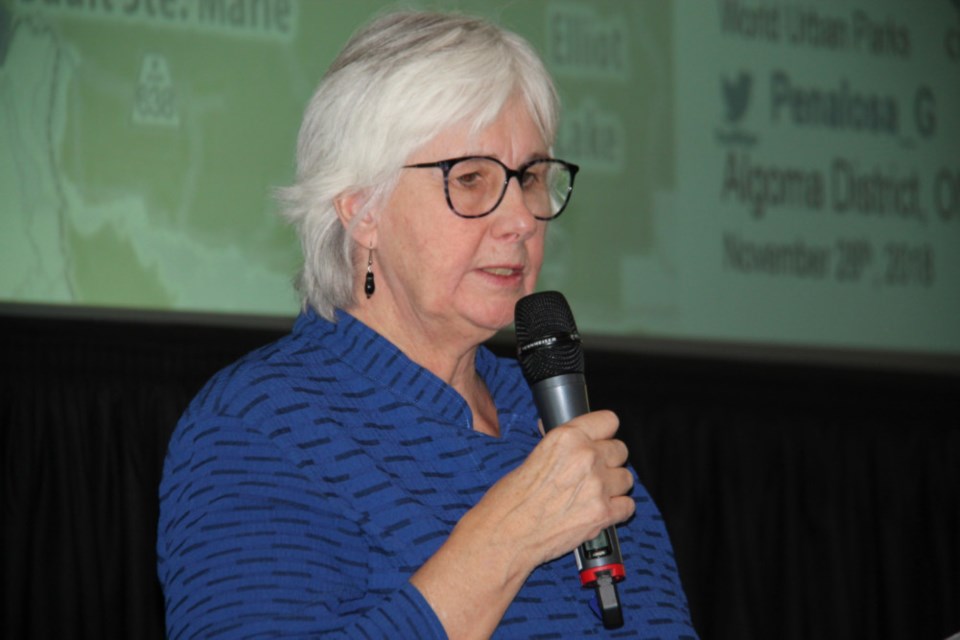There’s no shortage of things to talk about at Algoma Public Health lately.
The public health unit is recovering from a ransomware attack on the morning of Friday, April 19 that blocked access to the APH servers.
“All in all, we seem to have weathered this one okay,” said Dr. Marlene Spruyt, APH medical officer of health and CEO, speaking to the APH board of directors at its Wednesday meeting.
While some APH programs and services have been cancelled for Thursday, Spruyt said “it looks like we’ll be fully operational by early next week.”
Much of the evening’s business dealt with the provincial government’s intention to reduce the number of Ontario public health units from 35 to 10 and cut public health spending by $200 million by 2020-2021.
The move, which caught many off guard, was contained in the government’s budget, unveiled April 11.
“That threw a lot of people into a bit of panic,” Spruyt remarked, speaking to the board.
“The concern is the uncertainty,” Spruyt told SooToday.
“You go forward and we can accept changes but we don’t actually know where we’re going. They’re talking about 10 new regional health units and we don’t know where the geographic boundaries are. So it’s really hard to plan to cut dollars and find efficiencies when you don’t know who your colleagues are going to be in that region.”
“It gives a lot of our staff considerable anxiety because they are worried if their jobs are going to be lost, and I can’t answer that question. I’ve told them we’re doing everything we can to keep people employed this year and we don’t think there’ll be any layoffs this calendar year of 2019, but going forward we don’t know what they (the provincial government) are going to expect in finding those efficiencies,” Spruyt said.
Health units across the province were granted the opportunity to take part in only a brief question and answer teleconference with the Ministry of Health and Long Term Care after the budget.
Spruyt said “it was rather cryptic messaging because they haven’t given us the map of the 10 regional units.”
APH, however, did discover out of the 10 units, three will be smaller and rural with a population of less than a million people each, six with a population of over a million people each and Toronto in a class of its own.
“The funding ratio for the smaller ones, which is where we presume we’re going to end up, will go from the current 75-25 to a 70-30 split and will remain so over the next three years (with a different funding split for other, larger units),” Spruyt told the board.
Under the government’s cost-cutting plan, Spruyt said APH will have to shave $651,058 from its operating budget by April 1 (though APH officials aren’t clear whether that means next April, or retroactive to April 1, 2019).
An additional $552,000 will have to come from the municipalities within the APH region in the form of levies to make that 70-30 split work.
“Fortunately over the last few years we’ve actually run a surplus...already we’re running a surplus of a couple of hundred thousand dollars, so we’re optimistic we can find that saving in this year’s budget,” Spruyt told us.
Going forward, Spruyt said the health unit will have to decide “which services have the biggest impact on the population’s health and which ones have minimal impact, which ones are going to save lives and which ones are nice to have.”
More meetings between APH and Ministry officials are coming in order to get more answers to specific questions, with the APH board passing a resolution Wednesday to compose a letter, outlining the health unit’s concerns, to be sent to the Ontario government.
“We’re not totally against less health units,” Spruyt told the board, noting some health units in southern Ontario have voluntarily merged.
“I’d be very distressed if they said we’re going to be part of the health unit that includes Barrie or Collingwood, but if the regional district is northeastern Ontario, we know our needs are very similar to Sudbury and South Porcupine, so there may well be efficiencies.”
